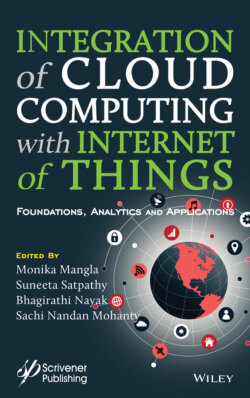Читать книгу Integration of Cloud Computing with Internet of Things - Группа авторов - Страница 73
3.5 Performance Analysis
ОглавлениеThe proposed FBELPM model for handling IoT devices is implemented in JAVA. The proposed model utilizes strong security mechanisms for successful data transmission. The proposed model is compared with the traditional Trust Based Detection (TBD) method and the results exhibit that the proposed model exhibits better performance in terms of security and data transmission. The time levels for grouping IoT devices are depicted in Figure.
The computational time levels for data processing in Fog model is less when compared to the traditional Secured Data Aggregation (SDA) model. The time levels for IoT group establishment in proposed and traditional models are depicted in Figure 3.6. The time for processing the data shared among the group is less as the authorization method verifies the users sharing the data are genuine or not. The computational time levels are depicted in Figure 3.7.
Figure 3.6 Time levels for IoT group establishment.
Figure 3.7 Computational time levels for data processing.
The process of identification of malicious activities among the IoT devices is a challenging task. Because of malicious actions, the data in the group will be lost or modified to cause ambiguity in the group. The detection rate of malicious nodes in the proposed model is high when compared to the traditional methods. The malicious node detection rate is depicted in Figure 3.8.
The Fog computational Secured data storage levels are depicted that indicates that the proposed model takes less time to store the data after computational process. The data storage in cloud should undergo a strong verification process to avoid data loss and also to complete the computational process. The fog computational security levels for data storage is depicted in Figure 3.9
Figure 3.8 Malicious node detection rate.
Figure 3.9 Fog computational security levels for data storage.
